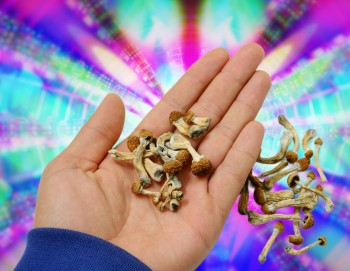
A Simple Guide for using Cannabis for Pain Management
Cannabis has been used for medicinal purposes for centuries, and one of the most common reasons for its recommendation is pain management. As more countries and states legalize medical cannabis, an increasing number of people are turning to this natural remedy to alleviate various types of pain, including chronic pain, neuropathic pain, and pain associated with certain medical conditions like various cancers and multiple sclerosis.
However, it's essential to understand that the way cannabis is used can significantly impact its effectiveness in managing pain. While smoking a pipe and a joint might seem similar, there are subtle differences that can alter the intensity and amount of smoke inhaled, ultimately creating a different effect. The temperature at which cannabis is heated, the type of device used, and even the strain of cannabis chosen can all play a role in how effectively it manages pain.
Moreover, individual genetics also influence how one responds to cannabis. The human body has an endocannabinoid system, which interacts with the compounds found in cannabis, primarily THC and CBD. Variations in the genes that code for the receptors in this system can affect how a person metabolizes and responds to these compounds, leading to differences in pain relief experienced.
Despite these variables, there are certain tips and tricks that can help optimize the use of cannabis for pain management. From selecting the right strains for pain management and dosage to choosing the most appropriate consumption method and timing, there are several factors to consider when using cannabis for pain relief. By understanding these nuances and tailoring cannabis use to individual needs and preferences, people can effectively harness the potential of this versatile plant to alleviate pain and improve their quality of life.
In this article, we will explore some real-world feedback from individuals who have used cannabis for pain management, shedding light on what works best for different types of pain and personal circumstances. By sharing these experiences and insights, we hope to provide valuable information for those considering using cannabis as a natural alternative for pain relief.
Quick Pain Relief With Cannabis
When it comes to fast-acting pain relief, smoking or vaping cannabis is often the most effective method. These consumption methods allow the active compounds in cannabis, such as THC and CBD, to be rapidly absorbed into the bloodstream through the lungs, providing pain relief within 5-10 minutes. Another quick-acting option is using a sublingual tincture, which is a concentrated liquid form of cannabis that is placed under the tongue for rapid absorption into the body.
Smoking or vaping cannabis is the quickest way to experience its psychoactive properties, as the compounds bypass the digestive system and enter the bloodstream directly. This rapid onset can be particularly beneficial for individuals dealing with sudden or acute pain, such as headaches, menstrual cramps, or muscle spasms. The fast-acting nature of smoking or vaping allows users to titrate their dosage more accurately, as they can feel the effects quickly and adjust their intake accordingly.
While smoking or vaping cannabis may provide quick relief, it's important to note that these methods are not the most potent ways to consume cannabis. Edibles and concentrates, for example, can offer stronger and longer-lasting effects, but they also take longer to kick in. However, when it comes to pain related to tension or slight inflammation, smoking or vaping can be an ideal approach, as the rapid onset of effects can help alleviate discomfort quickly.
Titration, or the process of gradually adjusting the dosage to find the optimal level of relief, is highly dependent on the individual. Factors such as body weight, metabolism, and tolerance can all impact how a person responds to cannabis. By starting with a low dose and slowly increasing it as needed, users can find the right balance that provides effective pain relief without causing unwanted side effects.
When considering smoking or vaping cannabis for medical purposes, it's generally recommended to opt for vaping over smoking. Vaping involves heating the cannabis to a temperature that releases the active compounds without producing the harmful byproducts associated with combustion. This makes vaping a potentially healthier alternative to smoking, as it reduces exposure to toxins and irritants that can be detrimental to lung health.
Long Lasting Pain Relief
While smoking or vaping cannabis can provide quick relief for certain types of pain, those seeking long-lasting relief for deeper, more persistent pain may find edibles or concentrates to be a more effective solution. Edibles, such as cannabis-infused foods or beverages, offer a unique way for the body to process THC, the primary psychoactive compound in cannabis.
When cannabis is consumed orally, the THC undergoes a process called first-pass metabolism in the liver. During this process, the liver converts Delta-9-THC into 11-hydroxy-THC, a metabolite that is said to be up to 10 times more potent than the original compound. This increased potency can result in a more intense and longer-lasting experience compared to smoking or vaping, where the Delta-9-THC directly enters the bloodstream without undergoing this conversion.
However, the trade-off for this increased potency is a slower onset of effects. When consuming edibles, it can take anywhere from 30 minutes to an hour to start feeling the effects, as the body needs time to digest and metabolize the THC. This delayed onset can be challenging for some users, as it requires patience and careful dosing to avoid consuming too much.
Overconsumption of edibles can lead to a "green out," a term used to describe a state of intense discomfort characterized by symptoms such as dizziness, nausea, and extreme paranoia. The effects of edibles can also feel more "narcotic" or sedating compared to other consumption methods, which may be beneficial for those dealing with severe or chronic pain.
When it comes to managing deep, persistent pain, edibles or concentrates may be the best approach. The long-lasting effects of these consumption methods can provide sustained relief for several hours, making them particularly useful for individuals with conditions such as chronic back pain, fibromyalgia, or pain associated with cancer treatment.
It's crucial to start with a low dose when trying edibles or concentrates for the first time, as the potency can vary significantly between products. Waiting at least an hour before consuming more is also essential to avoid accidental overconsumption. As with any cannabis use, it's always best to consult with a medical professional to determine the most appropriate dosage and consumption method for your specific needs and medical condition.
The Limitations of Cannabis for Pain Relief
While cannabis has been hailed as a natural and effective solution for pain management, helping millions of people worldwide, it's important to recognize that it may not work for everyone. Cannabis is known to be a highly individualized medicine, meaning that its effects and efficacy can vary significantly from person to person. This variability is due to factors such as individual physiology, genetics, and tolerance levels.
Some people report experiencing significant pain relief after using cannabis, while others may find little to no benefit. This inconsistency can be frustrating for those seeking an alternative to traditional pain medications, as it may require a trial-and-error approach to find the right strain, dosage, and consumption method that works best for their specific needs.
Another challenge with using cannabis for pain relief is the lack of standardized dosing guidelines. Since cannabis interacts differently with each individual, there is no one-size-fits-all approach to dosing. This can make it difficult for those new to cannabis to determine the appropriate amount to consume, leading to potential overconsumption or under-consumption, both of which can hinder the desired pain-relieving effects.
While it is virtually impossible to fatally overdose on cannabis, consuming too much can lead to an unpleasant experience known as "greening out." This is particularly common with edibles, as the delayed onset of effects can tempt people to consume more than they should. Symptoms of greening out can include intense anxiety, paranoia, dizziness, and nausea, which can be distressing and counterproductive for those seeking pain relief.
Despite the growing acceptance of medical cannabis, it remains a taboo subject in some circles. This stigma can make it challenging for individuals to openly discuss their use of cannabis for pain management with friends, family, or even healthcare providers. Additionally, the legal status of cannabis varies by country and state, making it difficult for patients to travel with their medication, which can be a significant hurdle for those who rely on cannabis for chronic pain relief.
While cannabis has shown great promise as a natural alternative for pain management, it is not a panacea. Its highly individualized nature means that some people may not experience the desired pain relief, while others may struggle with finding the right dosage or dealing with potential side effects. The persistent taboo surrounding cannabis use can also create social and logistical challenges for those who rely on it for pain management.
As with any medical treatment, it's essential to consult with a healthcare professional to determine if cannabis is an appropriate option for your specific pain management needs and to develop a personalized treatment plan that takes into account your unique circumstances and goals.







_Blume.jpg?width=350)